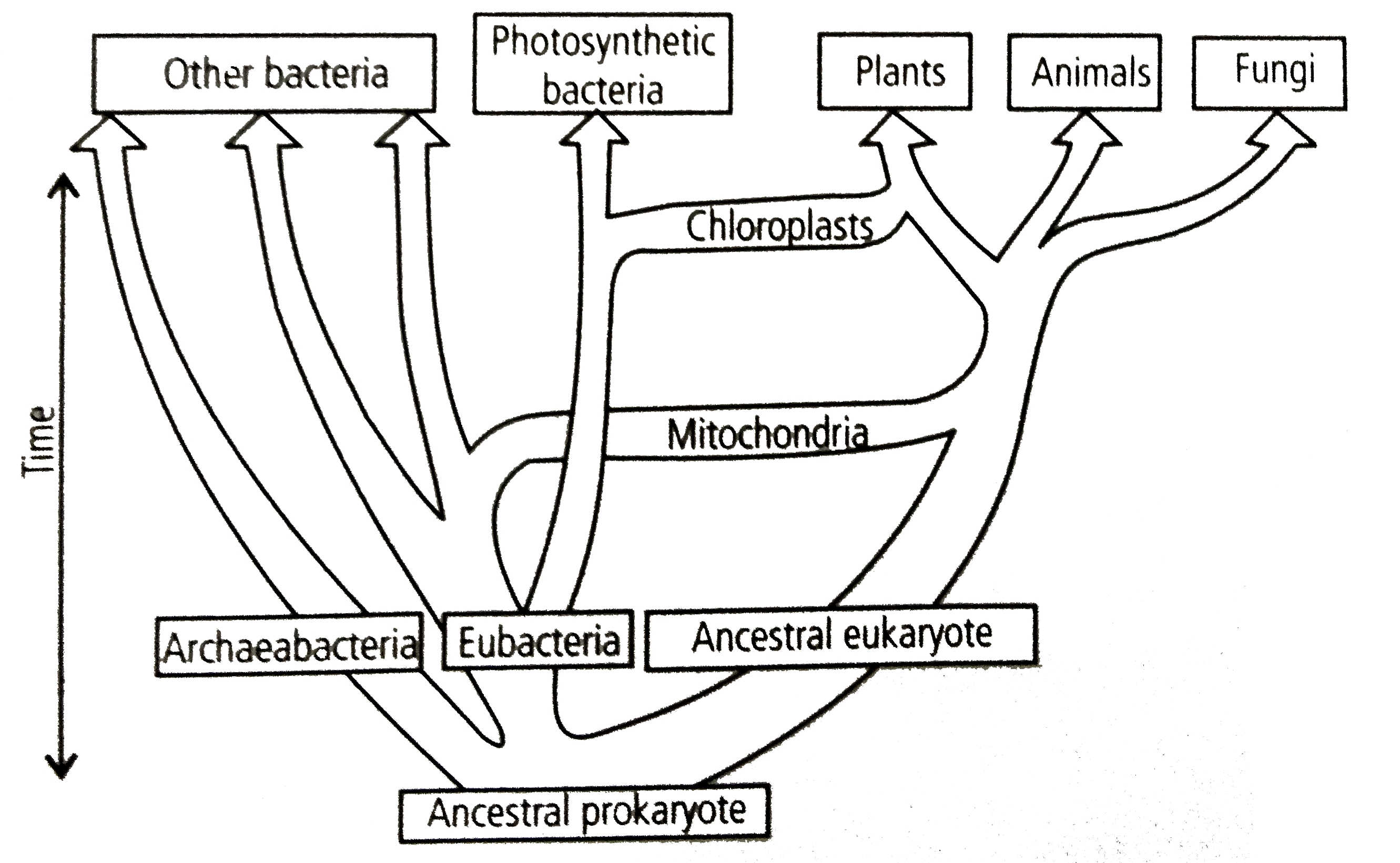The evolutionary story of moths in England during industrialisation reveals, that ' evolution is apparently reversible '. Clarify this statement.
During the last century in the industrial regions of England, a light coloured peppered moth Biston betularia was found on the bark trees. The tree bark was covered by whitish lichens, so light coloured moths escaped unnoticed from predatory birds.
After industrialisation, barks got covered by smoke, so the white moths were selectively picked up by birds. However, the black coloured moths escaped unnoticed against a dark background and became abundant.
However, in recent year, reduced industrial pollution has led to the growth of lichens again and thus, the population of light coloured moths is again increasing.
This evolutionary story of moths in England, thus reveals, that 'evolution is apparently reversible'
Topper's Solved these Questions
- BOOK - NCERT EXEMPLAR ENGLISHCHAPTER - EVOLUTIONEXERCISE - Long answer type Questions7videos
EVOLUTION
- BOOK - NCERT EXEMPLAR ENGLISHCHAPTER - EVOLUTIONEXERCISE - Very Short Answer Type Questions.15videos
EVOLUTION
- BOOK - NCERT EXEMPLAR ENGLISHCHAPTER - ENVIRONMENTAL ISSUES EXERCISE - Long Answer Type Questions7videos
ENVIRONMENTAL ISSUES
- BOOK - NCERT EXEMPLAR ENGLISHCHAPTER - HUMAN HEALTH AND DISEASESEXERCISE - All Questions69videos
HUMAN HEALTH AND DISEASES
Similar Questions
You have studied the story of peppered moths in England. Had the industries been removed, what impact could it have on the moth population ? Discuss.
View SolutionAssertion :- In England, before industrialisation, it was observed that there were more white-winged moths on trees than dark-winged or melanised moths.
Reason :- White winged moths can survive in non industrialised area.View Solution
Knowledge Check
- Question 1 - Select One
Given diagram illustrates an evolutionary tree.

Which of the following statements can be deduced from the given evolutionary tree?
(i) The ancestral eukaryotes were anaerobic.
(ii) All eukaryotes were anaerobic.
(ii) All eukaryotes possess mitochondria.
(iii) Eubacteria and Eukaryota have a common ancestor whereas Archebacteria have a unique and independent origin.
(iv) Mitochondria and chloroplasts have similar genomes.
(v) Mitochondria are presents in plants, animals and fungi.
(vi) chloroplasts and mitochondria arose asendosymbionts.
(vii) Fungi and animals lost chloroplasts during evolution.Aiii,v and viBi,v and viCii,iii,iv and vDi,v,vi and vii - Question 2 - Select One
Read the following statements and choose the correct option.
(A) Increase in melanized moths after industrialization in Great Britain is a proof for natural selection.
(B) When more individuals of a population acquire a mean character value, it is called disruption.
(C ) Changes in allelic frequency in a population will lead to Hardy-Weinberg equilibrium
(D) Genetic drift changes the existing gene or allelic frequency in future generationsAOnly ii is correct.BOnly iv is correct.CBoth I and iv are correct.DBoth I and ii are correct. - Question 3 - Select One
The most apparent change during the evolutionary history of Homo-sapients is traced in
Aloss of body hairBwalking uprightCshortening of the jawsDremarkable increase in the brain size.
a) How do the observations made duirng moth collection in pre- and postindustralized era in England support evolution by Natural Selection?
b) Explain the phenomenon that is well represented by Darwin's finches other than natural selection.View SolutionA. The conditions primitive on earth (before the origin of life) were :
low temperature, volcanic storms, reducing atmosphere containing Ch4,NH3, etc.
B. Cheetah and humans share similarities in the pattern of bones of forelimbs.
C. In a collection of moths made in the 1850s i.e., before industrialization set in, it was observed that there were more dark-winged moths on trees than white-winged moths.
D. Branching descent and natural selection are the two key concepts of Darwinian theory of evolution.
E. The Neanderthal man with a brain size of 1400 cc lived in east and central Asia 25,000-10,000 years age.
Which set of given statements are correct ?View SolutionTaking an example of white-winged moths and dark-winged moths of England in per and post industrialised era, explain evolution by natural selection .
View SolutionThe most apparent change during the evolutionary history of Homo-sapients is traced in
View SolutionSelect the incorrect statement.
( i ) The essence of the Darwinian theory of evolution is natural selection
(ii) Evolution is a directed process in the sense of determinism
(III) The geological history of the earth is not related to the biological history of the earth
(IV ) During evolution ,the rate of appearance of new forms is linked to the life cycleView Solution
